|
|
Japanese Supremacy, |


|
The A6M2 Zero was known as the most outstanding Japanese fighter of the war, the aircraft had two wing-mounted 20mm cannon, a 7,7mm machine gun, and could carry 1101b bombs.This Zero was used in most carrier squadrons in December 1941. |
7 January 1942,
|
|
| "Der Wannsee Conference" is held in Berlin, subject was to coordinate the Final Solution; Reinhard Heydrich, subordinate of Himmler and head of the RSHA (Reichssicherheitshauptamt) presides. Eichmann takes official notes at the meeting which survive as evidence, present were too Schöngarth and Freisler. |
|
| Heydrich's list about the numbers of Jews, who must be killed
in the different countries. | ||||||||||
|---|---|---|---|---|---|---|---|---|---|---|
| Land | Number | Land | Number | Land | Number | |||||
| Germany (before 1938) | 131.800 | Albania | 200 | Spain | 6.000 | |||||
| Norway | 1.300 | Turky | 55.000 | |||||||
| "Ostmark" | 43.700 | Bulgaria | 48.000 | Hungaria | 742.800 | |||||
| "Ost-Gebieten" | 420.000 | Sweden | 8.000 | Russia | 5.000.000 | |||||
| Poland | 2.284.000 | Finland | 2.300 | Oekraine | 2.994.684 | |||||
| Bialystok Bohemen/ | 400.000 | Ireland | 4.000 | White Russia | 446.484 | |||||
| Italy | 58.000 | --------------------------------- | ||||||||
| Moravia | 74.200 | Portugal | 3.000 | Total | 11.000.000 | |||||
| Estland | Judenfrei | Kroatia | 40.000 | |||||||
| Letland | 3.500 | Netherlands | 160.800 | |||||||
| Litauen | 34.000 | Romania | 342.000 | |||||||
| Belgian | 43.000 | England | 330.000 | |||||||
| Denmark | 5.600 | Suisse | 18.000 | |||||||
| France occupied | 165.000 | Servia | 10.000 | |||||||
| not occupied | 69.600 | Slowakia | 6.000 | |||||||
| Losses from the begin of the British offensive on 18-11-1941: | ||
|---|---|---|
| Land | Men losses | |
| Germany | 13.000 | |
| Italy | 20.000 | |
| Great-Britain | 17.000 | |
 |
The Italian P-26/40 tank was designed to serve the Italian Army as a heavy tank and did so with 23 tons and a powerfull 75 mm cannon. It served from 1942 to september 1943, when Italy surrendered. The armor was similar to that of the US Sherman tank. |
![]()
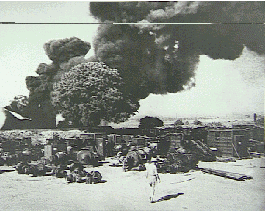
|
|
| Relative strenght in April at the Eastern Front | ||||
|---|---|---|---|---|
| Germany | Russia | |||
| Soldiers | 4.000.000 | 5.000.000 | ||
| Tanks | 3.000 | 5.000 | ||
| Planes | 2.500 | 3.000 | ||
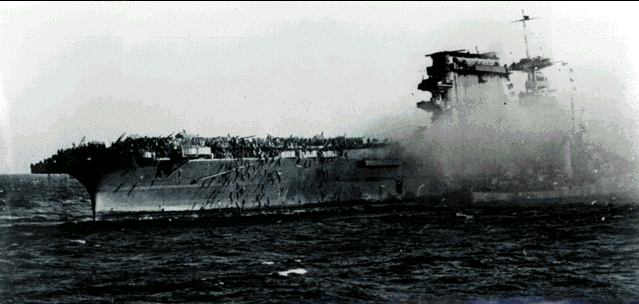
|
|
| Comparative strenght for "Theseus". | ||||||
|---|---|---|---|---|---|---|
| Germany | Italy | Great-Britain | ||||
| Tank div. | 3 | 1 | 2 | |||
| Motor. div. | 1 | 3 | ||||
| Inf. div. | 4 | |||||
| Motor. brig. | 1 | |||||
| Tanks | 333 | 228 | ||||
| Planes | 542 | 604 | ||||

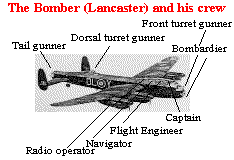

| armament: 10x 20,1 cm, 16x 12,7 cm, 22x 25 mm anti-aircraft artillery and 90 planes. |
| armour: 27,9 cm around |
| displacement: 38.200 ton |
| depth: 9,15 m |
| speed: 52 km/u |
| crew: 2019 |
| lengths: 206,32 m |
| most width: 32,56 m |
| The Battle of Midway, 3-7 June. | ||||||
|---|---|---|---|---|---|---|
American Losses: | ||||||
| According to Japan | In reality | |||||
1.Ships | ||||||
| Sunk 2 carriers of "Enterprise-Class", 1 heavy cruiser of "San-Francisco-Class" damage, 1 destroyer sunk. | Sunk carrier "Yorktown" and destroyer "Hammond". | |||||
2.Planes | ||||||
| By the attack shot down or destroy on the ground | 45 | From carriers | 109 | |||
| By attack on USA carriers shot down | 15 | On the mainland place planes: Marine corps: 28 Marine: 6 Leger: 4 | ||||
| By Fighters shot down | 90 | |||||
| By anti-aircraft artillery on Japanese ships shot down | 29 | |||||
| Total | 179 | |||||
Japanese Losses: | ||||||
1.Ships | ||||||
| Sunk: | 4 great carriers "Akagi", "Kaga", "Hiryu" and "Soryu". 1 heavy cruiser "Mikuma". | |||||
| Heavily damage: | 1 heavy cruiser "Mogami". | |||||
| Considerable damage: | 2 destroyers "Arashio" and "Asashio". | |||||
| Lightly damage: | 1 tanker "Akebono Maru" by airtorpedo. 1 destroyer "Tanikaze". 1 battleship "Haruna". | |||||
2.Planes | ||||||
| Loss at the attack on Midway | 6 | |||||
| Lost fighters | 12 | |||||
| Lost by the attack on USA-carriers | 24 | |||||
| Sunk with Japanese carriers | 280 (more or less | |||||
| Rest | 10 | |||||
| ----- | ||||||
| Total | 332 | |||||
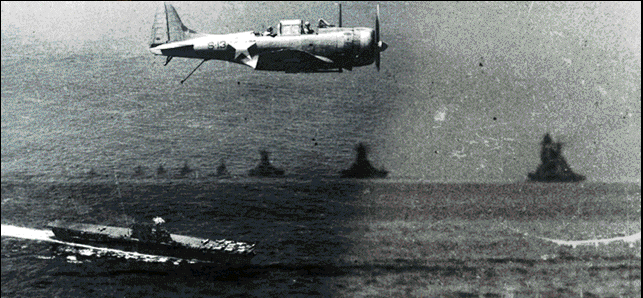
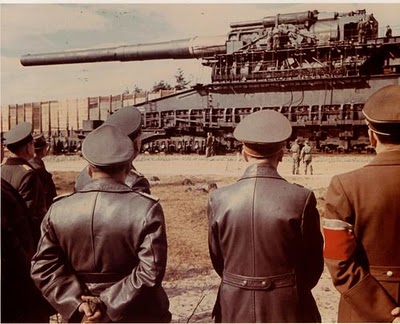
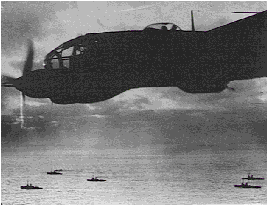
| Number of casualities; Losses on the Allied Merchantman and their tonnage (B.R.T). | ||||||||||||||||
|---|---|---|---|---|---|---|---|---|---|---|---|---|---|---|---|---|
| North Atlantic | South Atlantic |
North Sea/ East-Sea British Waters | Total | |||||||||||||
| Numbers B.R.T | Numbers B.R.T | Numbers B.R.T | Numbers B.R.T | |||||||||||||
| 3/9/1939- | ||||||||||||||||
| 31/12/1939 | 57 | 272 | 8 | 49 | 149 | 424 | 214 | 745 | ||||||||
| 1940 | 380 | 1844 | 9 | 65 | 552 | 1678 | 941 | 3587 | ||||||||
| 1941 | 522 | 2490 | 19 | 136 | 316 | 676 | 857 | 3302 | ||||||||
| 1942 | 1017 | 5519 | 103 | 627 | 74 | 140 | 1194 | 6286 | ||||||||
| 1943 | 286 | 1672 | 67 | 397 | 23 | 37 | 376 | 2106 | ||||||||
| 1944 | 32 | 177 | 9 | 53 | 68 | 275 | 109 | 505 | ||||||||
| 1/1-2/9/1945 | 19 | 116 | 2 | 11 | 62 | 232 | 83 | 359 | ||||||||
| ---- | ---- | ---- | ---- | ---- | ---- | ---- | ---- | |||||||||
| Total | 2313 | 12060 | 217 | 1338 | 1244 | 3462 | 3774 | 16890 | ||||||||
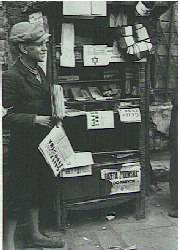
|
|
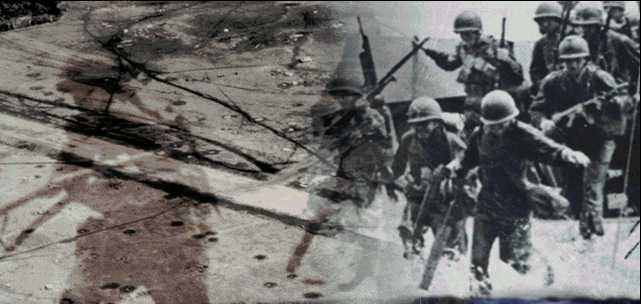
| Statistics Bombers: | Flights | Lost | % | |||
| USA; | ||||||
| 17 aug.1942 till 30 dec. 1942 | 1547 | 32 | 2 | |||
| UK; | ||||||
| 3 sept.1939 till 30 dec. 1942 | 17.501 | 2859 | 4 | |||
22 October 1942,
23 October 1942,
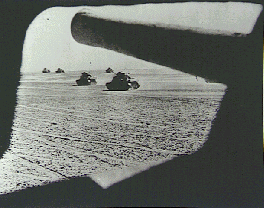
British tanks of 8th Army go forward at El Alamein.
| Relative strength at the begin of the British Offensive at 23 October. | ||||||
|---|---|---|---|---|---|---|
| Material | Germans/ Italian |
(From that Italian) | British and Confederate | |||
| ca. men | 96.000 | 150.000 | ||||
| Inf.div. | 7 | (5) | 3 brigades | |||
| Mot.div. | 2 | (1) | 7 | |||
| Tank div. | 4 | (2) | 4 (+ 7 arm.reg.) | |||
| Tanks | 500 | (280) | 1200 (470 heavy) | |||
| Air Force | 880 | |||||
| Bombers | 129 | |||||
| Stuka's | 65 | |||||
| Air-fighters | 55 | |||||
| Fighters | 123 | |||||
| till 12 may '43: 335.000 Germans are prisoners at war. | ||||||

Relative strength at Stalingrad, 19 november 1942. | ||||
|---|---|---|---|---|
| Sowjet- Union | Germany | |||
| 1."South Westfront" | Troops | 2 | 1 | |
| Artillery | 2 | 1 | ||
| Grenade throwers | 3,5 | 1 | ||
| Tanks | 2 | 1 | ||
| 2."Stalingradfront" | Troops | 2,5 | 1 | |
| Artillery | 3 | 1 | ||
| Grenade throwers | 3 | 1 | ||
| Tanks | 3 | 1 | ||
| Total at both Armygroups: | ||||
| Grenade throwers/Artillery | 17.031 | |||
| Tanks | 1.140 | |||
| Planes | 2.267 | |||
![]()